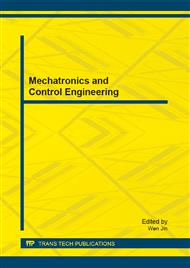p.355
p.361
p.366
p.372
p.378
p.384
p.389
p.396
p.401
Knowledge Modeling and Solving Strategy for Product Innovation Design
Abstract:
Knowledge modeling and solving strategy are the key techniques of improving the innovation design ability of a complex product with design knowledge system. Aiming at a formal expression of product behavior knowledge, generalized variables are introduced from the bond graph theory. The attributes of motion behavior are used to realize the unity of dynamic behavior and static behavior. The ontology model of product design function, behavior, structure knowledge is constructed with the six-tuple structure. With the breadth first search FBS ontology mapping strategy, product design is realized by searching within product design knowledge base according to the name similarity. For the new function introduced by new demand in product design, concept learning based on variant space is proposed to get the general function unit or special function unit. Then the innovation design is realized through FBS ontology mapping strategy. The validity of the proposed method is verified by example of innovation design of multi-wire diamond saw.
Info:
Periodical:
Pages:
378-383
Citation:
Online since:
July 2013
Authors:
Keywords:
Price:
Сopyright:
© 2013 Trans Tech Publications Ltd. All Rights Reserved
Share:
Citation:


